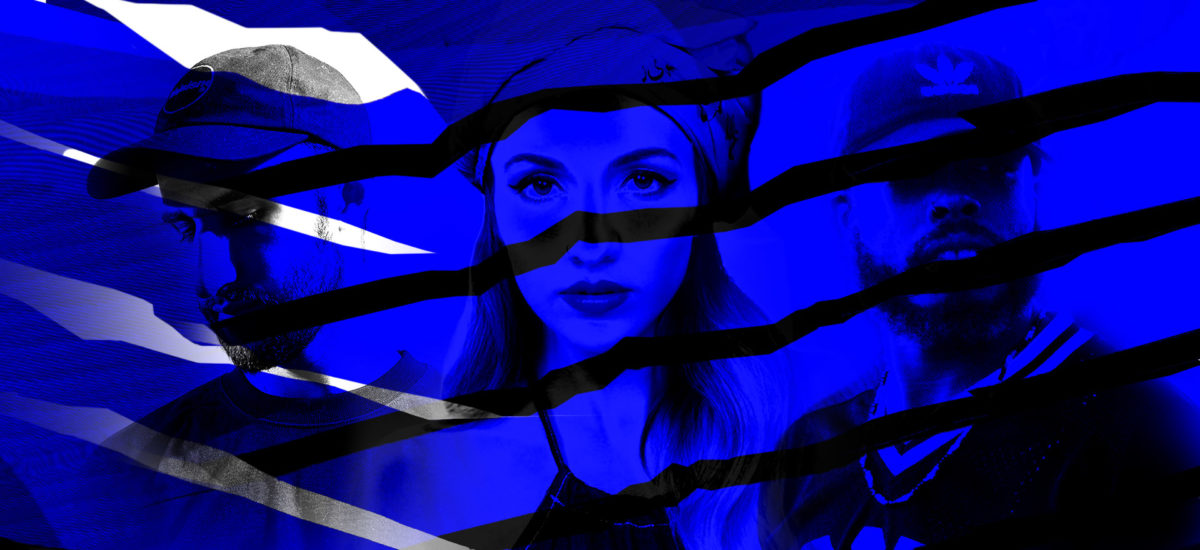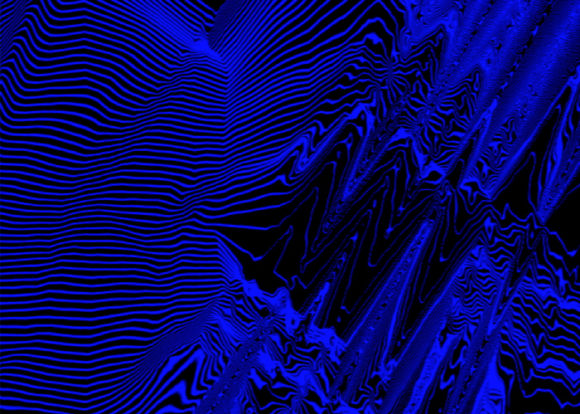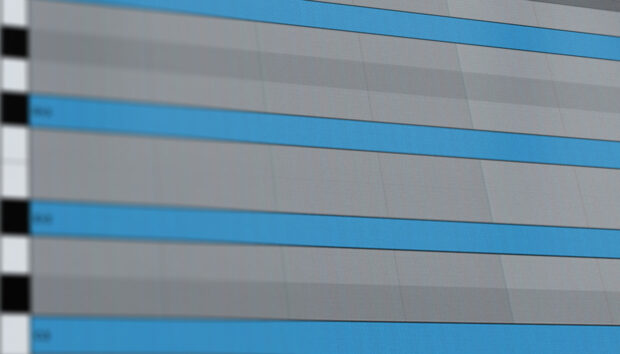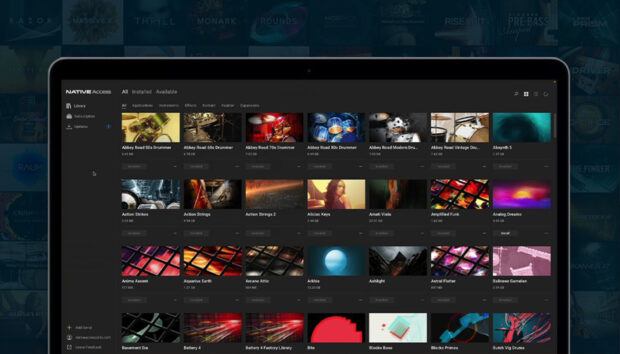
Native Sketches is back. With season two of the audio-visual cookbook out now, Native Instruments asked Jeff Weiss – creator of Passion of the Weiss (the “last real rap blog on the internet”), as well as Pitchfork and LA Weekly regular – to wax lyrical on the art of the sketch and offer his thoughts on this year’s crop of beatmakers. Read on to find out what he had to say.
First thought, best thought. That’s the Buddhist credo coined by the Tibetan sage, Chogyam Trungpa and applied by his pupil, the Beat poet, Allen Ginsberg. It’s a form of wisdom applicable to any creative endeavor: art, dance, writing, and music. Yet the latter form is where spontaneity and improvisation are most crucial. Music is our way to tap into the subconscious brain, to carve rhythms from the ether, to soundtrack our waking life.
Enter the sketch. It can be the first draft or the blueprint, a crude outline that will ultimately be ripped up or the architectural framework for a masterpiece. The sketch is rooted in the idea of first thought, best thought. It is a burst of creativity, a sizzling bolt of inspiration, and a northwest passage connecting the soul to the back of the brain, and finally to the hands themselves.
In the instance of Native Instruments’ “Sketches” series, 25 brilliant producers from across the globe have sutured myriad genres into original suites, re-affirming the power of initial creative instincts. The artists were given no formal rules, but were grounded in the idea of limitations. This is the key to avoid complications or getting lost in the sauce. These songs took no more than three hours, but they all stand up to any test—whether you’re nodding out in a delirious 3 a.m. headphone haze or riding around with the bass so loud that it could crumble a brownstone.
Examine the sketch conceived by Cazal Organism, son of Latin rap pioneer Mellow Man Ace, and a linchpin of Los Angeles’ Low End Theory beat scene. What could’ve been an hour idly scrolling screens instead became a finally formed vision. He titled it “Father Sky, Mother Earth,” a notion that began one morning at dawn when the producer born Ulpiano Cuba Reyes composed a beat using iMaschine 2 on his iPhone. The following afternoon he started an entirely new track in his studio, only to backtrack halfway through and combine it with the chords from the previous night’s revelation.
“That’s the moment I fell in love with iMaschine 2 as a tool for crafting super mutable sketches,” Cazal says.
It’s a portability that offers a power that musicians have long desired: the ability to record those eureka volts of lightning inspiration at the moment of first conception. In the case of Cazal’s beat, it alchemizes slow-roasted cozy keyboard licks to 32nd century synthesizers and unquantized drums that slap like J Dilla’s holy spirit did the programming.
Hardware is merely a vessel for the spirit. No algorithm or formula can produce a song to stop you dead in your tracks. The beauty of a sketch is that there is no filter, no elaborate amount of time allotted to second guess. It is raw by nature, and as Wu-Tang once declared, “if it ain’t raw, it’s worthless.” The minute-plus vignette from Gary, Indiana’s Hajjimus Prime distills that ethos. Despite its slight duration, it’s exquisite and melancholy, transmitting a sense of sorrow that becomes haunting and inescapable, a mystic chord of memory.
Famed for his work with 9th Wonder and Justus League, the rarified North Carolina beatmaker KHRYSIS first won fame for sampling vinyl tracks and sustaining the unalloyed tradition of boom-bap into the 21st century. But aided by modern technology, he exhibits a brilliant evolution, looping what sounds like a hover-converted East Flatbush Project to pulverizing drums, both clean and filthy, modern but unmistakably tethered to hip-hop’s Golden Age lineage.
In his retelling of how he built the beat, it sounds so simple: merely a matter of finding a nice loop, hard-hitting drums, and a thick bass tone sampled with Maschine. As KHRYSIS says, “the sampler makes it really easy to chop and truncate my sounds, but my favourite feature right now is the duplicate button—it helps me stay in the flow and move on to the next chop without any loading or resetting parameters.”
All producers are different. Zaytoven (Gucci Mane, Future) famously said that he usually doesn’t spend more than 15 minutes on a beat. While Dr. Dre has been known to obsessively re-work a song for years until it’s perfect. In the instance of the sketch, the Maschine is crucial for allowing producers to keep their focus in a fractured world. These songs in the Sketches series retain a certain continuity and coherence. KHRYSIS describes his track as truly a sketch, “a song idea in its rawest form.” And there’s a hydraulic power in that. There is no second-guessing—merely a purity in the divination.
The Sketches series offers a window into the rich diversity of dance music and hip-hop sub-genres. If outsiders sometimes perceive them as monolithic, the regional variances are on full display here. There’s London-based Hyperdub artist, Ikonika, whose emergence in the late 00s helped usher the British beat world into the post-dubstep era.
Her sketch bristles with taut claustrophobic tension—synthesizers that feel like collapsing walls, drums that feel like encroaching footsteps, comprising a warped nervous funk that mirrors the quickness of the composition. Or take Silk Road Assassins, whose sketch instantiates a feeling of cybernetic dread compressed into 90 seconds. It’s drill and trap deconstructed into a dystopian future where the clouds in your mind are permanently about to burst. This is a sketch in harsh but elegantly limned black and white, blurring video games, science fiction, anime, and the occasional Orwell hallucination. It’s over in 90 seconds, the grim facade fading away, but the lingering after-effects remaining salient.
This year’s Sketches project continues to expand upon the work of last year’s class—a group which encompassed instrumental grime vanguard, Mumdance, footwork visionary Jlin, and the inscrutable genre-dismantling LA transplants, Robot Koch and Deru. In this year’s incarnation, the artists assembled re-work the boundaries of instrumental hip hop, grime, techno, drum and bass, moombahton, dubstep, ambient and pop. Their visions of the sketch amount to a production Rashomon, these brief shards of sound offering new wrinkles and ideas—many of them fated to be filled in later by vocalists or ostensibly perfected for use on an album down the road.
But therein lies the paradox. There is the possibility that some of these songs can be refined, new drums can be swapped out for old, a bass line can be made fatter, a chord progression can be altered. However, it’s probable that they will not be improved upon. There is no substitute for the immense power of the first vision, the head rush of creativity translated into notes, the moment that an echo inside your left ear becomes a potential anthem captured indelibly. What else besides the sketch can exist as both the map and the road?
Native Sketches is back for season two. 25 new producers, 25 new works-in-progress, one simple challenge: Create a new track from scratch, using NI instruments and effects. The result? An audiovisual cookbook that inspires with cutting-edge sound design, generative visuals, and intimate accounts of each artist’s production process.


















